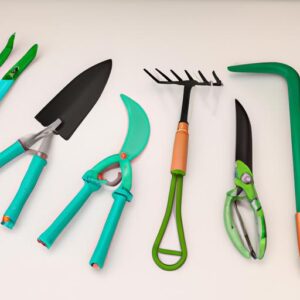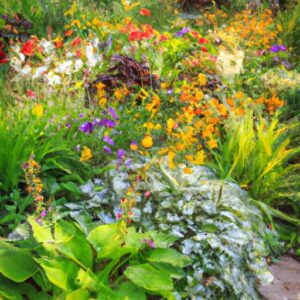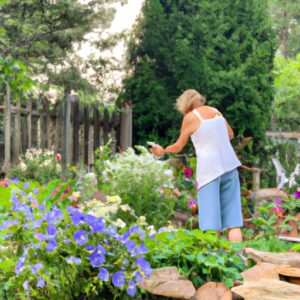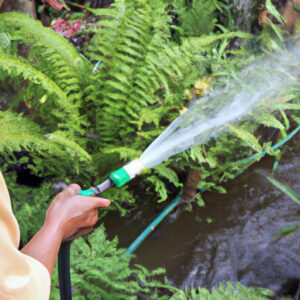When it comes to gardening, we all want to create a beautiful and healthy environment for our plants to thrive. One common practice many gardeners employ is the use of gardening lime to improve soil health. However, as pet owners, we also need to consider the safety of our furry friends. So, the question arises: is gardening lime safe for dogs?
Gardening lime, also known as agricultural lime or garden lime, is a widely used soil amendment that helps balance the pH level of acidic soils. It provides essential nutrients to plants and enhances soil structure, promoting optimal growth. But before we dive into its benefits, let’s address the concerns about its safety for our beloved dogs.
As responsible pet owners, we want to ensure that our furry companions are safe from any potential harm. It’s crucial to be aware of the potential risks associated with gardening lime and its impact on dogs. The chemical composition of gardening lime includes calcium carbonate, which can be hazardous if ingested in large quantities by our canine friends.
Now that we understand the concerns, let’s explore the safety precautions we can take when using gardening lime around dogs to ensure their well-being. Remember, prevention is key! Proper storage and handling of gardening lime are essential to avoid accidental ingestion by our curious companions. Storing it in a secure place away from their reach is crucial.
In the next section, we will discuss alternative approaches to gardening that are dog-friendly, ensuring both a thriving garden and a safe environment for our furry friends. So, let’s dive in and explore the world of dog-safe gardening alternatives.
What is Gardening Lime?
Definition and Purpose of Gardening Lime
Gardening lime, also known as agricultural lime or garden lime, is a soil amendment that plays a vital role in maintaining optimal soil health. Its primary purpose is to balance the pH level of acidic soils. When the soil is too acidic, it hinders nutrient absorption by plants, leading to stunted growth and poor health. Gardening lime helps neutralize the acidity, creating a more favorable environment for plants to thrive.
Common Types of Gardening Lime Available
There are different types of gardening lime available, each with its unique characteristics and applications. Here are a few common ones:
-
Calcitic Lime: This type of lime primarily consists of calcium carbonate. It is the most widely used gardening lime and is effective in neutralizing soil acidity.
-
Dolomitic Lime: Dolomitic lime contains a combination of calcium carbonate and magnesium carbonate. It is ideal for soils that require both pH adjustment and magnesium supplementation.
-
Hydrated Lime: Also known as slaked lime, hydrated lime is processed by adding water to quicklime. It is highly reactive and quickly adjusts soil pH. However, due to its potency, cautious handling is necessary to prevent harm.
It’s important to note that while gardening lime offers numerous benefits for plant health, we must consider the safety implications for our furry friends. In the next section, we will delve deeper into the potential risks associated with gardening lime ingestion by dogs and how we can mitigate those risks.
Potential Risks of Gardening Lime for Dogs
Chemical Composition of Gardening Lime and Its Effects on Dogs
To understand the potential risks of gardening lime for dogs, it’s important to delve into its chemical composition. Gardening lime primarily consists of calcium carbonate, which is safe for plants but can pose a threat to our canine companions if ingested in large quantities.
When dogs consume gardening lime, the high pH levels of calcium carbonate can cause irritation and burns in their gastrointestinal tract. This can lead to symptoms such as vomiting, diarrhea, and abdominal pain. In severe cases, it may even result in damage to the esophagus and stomach lining.
Symptoms of Gardening Lime Ingestion in Dogs
It’s crucial to be vigilant and recognize the symptoms of gardening lime ingestion in dogs. If you suspect that your dog has consumed gardening lime, keep an eye out for the following signs:
-
Gastrointestinal Distress: Dogs may experience vomiting, diarrhea, and loss of appetite. These symptoms can range from mild to severe, depending on the amount ingested.
-
Abdominal Discomfort: Dogs may exhibit signs of abdominal pain, including restlessness, pacing, or reluctance to lie down.
-
Excessive Drooling: Increased salivation can be a sign of irritation in the mouth and throat caused by gardening lime ingestion.
-
Pawing at the Mouth: Dogs may paw at their mouth or exhibit discomfort while swallowing due to the burning sensation caused by the lime’s high pH levels.
-
Lethargy and Dehydration: In severe cases, dogs may become lethargic, weak, and show signs of dehydration. It’s essential to seek veterinary care immediately if these symptoms occur.
Remember, prevention is always better than cure. By understanding the potential risks and being aware of the symptoms, we can take proactive measures to keep our furry friends safe from the adverse effects of gardening lime ingestion. Now, let’s explore the safety precautions we can implement to minimize these risks in Section
Safety Precautions for Using Gardening Lime around Dogs
Proper Storage and Handling of Gardening Lime
When it comes to the safety of our furry friends, taking proper precautions while handling and storing gardening lime is crucial. Here are some tips to ensure the well-being of your dogs:
-
Secure Storage: Store gardening lime in a secure location that is inaccessible to your dogs. Consider using locked cabinets, high shelves, or dedicated storage areas that are out of their reach.
-
Sealed Containers: Transfer gardening lime into sealed containers to prevent accidental spills or exposure. This will help minimize the chances of your dogs coming into contact with the substance.
-
Labeling: Clearly label containers containing gardening lime to avoid any confusion. This will ensure that everyone in the household is aware of its contents and can take necessary precautions.
-
Clean-Up: If any gardening lime spills occur, promptly clean up the area and dispose of the residue properly. Dogs are naturally curious and may investigate spills, so it’s important to remove any potential hazards.
Preventing Dogs from Accessing Gardening Lime
Prevention is key to keeping your dogs safe from potential harm. Here are some measures you can take to prevent them from accessing gardening lime:
-
Supervision: When working with gardening lime, keep a close eye on your dogs. If they are particularly curious or prone to exploring, consider keeping them in a separate area or using a leash to restrict their access.
-
Fencing: Install a barrier or fence around your garden or designated gardening area. This will help keep your dogs away from the gardening lime and other potentially harmful substances.
-
Training: Train your dogs to stay away from the gardening area and discourage them from investigating or consuming any substances they come across. Basic obedience commands such as “leave it” or “stay” can be helpful in redirecting their attention.
By following these safety precautions, you can ensure a safe gardening environment for both your plants and your furry friends. Now, let’s explore some dog-friendly alternatives to gardening lime that can provide similar benefits for your garden.
Alternatives to Gardening Lime for Dog-Friendly Gardening
When it comes to creating a dog-friendly garden, it’s important to explore alternative approaches that promote soil health without compromising the safety of our furry friends. Here are some natural methods and materials you can use to improve soil health while keeping your dog safe:
5.1 Natural Methods for Improving Soil Health
Instead of relying solely on gardening lime, consider incorporating these natural methods to enhance soil health:
Composting
Starting a compost pile not only reduces waste but also provides nutrient-rich organic matter for your garden. Compost improves soil structure, water retention, and nutrient availability, creating a thriving environment for plants without posing any risks to your furry companions.
Mulching
Mulching is another dog-friendly way to improve soil health. Organic mulches, such as wood chips or straw, not only suppress weeds but also help retain moisture and regulate soil temperature. Additionally, as these mulches break down over time, they enrich the soil with organic matter, enhancing its fertility.
5.2 Dog-Safe Fertilizers and Soil Amendments
If you prefer using fertilizers or soil amendments, there are dog-safe options available in the market. Look for products that are labeled as pet-friendly or organic, ensuring they do not contain any harmful chemicals. These alternatives provide the necessary nutrients for your plants without posing a threat to your four-legged companions.
Bone Meal
Bone meal, derived from animal bones, is a natural fertilizer rich in phosphorus and calcium. It promotes root development and overall plant growth. When used in moderation, bone meal is safe for dogs and can be an excellent alternative to gardening lime.
Seaweed Extract
Seaweed extract is a natural and organic fertilizer that is safe for both plants and pets. It contains a wide range of essential nutrients and trace elements, promoting healthy growth and boosting the plant’s natural defenses. Incorporating seaweed extract into your gardening routine can be an effective alternative to gardening lime.
By exploring these natural methods and dog-safe alternatives, you can create a garden that thrives while ensuring the safety and well-being of your furry friends. Embracing these alternatives will not only provide a healthier environment for your plants but also give you peace of mind knowing that your dogs can freely enjoy the garden without any harmful effects.
Conclusion
In conclusion, when it comes to gardening lime and its safety for dogs, it’s important to strike a balance between soil health and pet well-being. Gardening lime can be a valuable tool in improving soil pH and promoting plant growth, but we must exercise caution to keep our furry friends safe.
By understanding the potential risks associated with gardening lime and taking necessary precautions, such as proper storage and preventing access to our dogs, we can mitigate any potential harm. Remember, prevention is always better than cure.
However, if you’re still concerned about the safety of gardening lime for dogs, there are alternative approaches you can explore. Natural methods and materials, such as composting, organic fertilizers, and dog-safe soil amendments, can help you create a thriving garden without compromising your pet’s well-being.
As responsible pet owners, it’s crucial to prioritize the safety and health of our dogs while enjoying the benefits of gardening. By considering their needs and making informed choices, we can create a harmonious space where both our plants and our furry companions can thrive.
So, go ahead and get your hands dirty in the garden, but always keep your furry friend’s safety in mind. With the right precautions and alternatives, you can have a beautiful garden and a happy, healthy dog by your side. Happy gardening!





